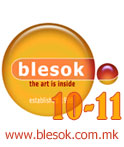The Dionysus Phenomenon and the Metamorphoses in Macedonian Oral Literature
The Dionysus Phenomenon and the Metamorphoses in Macedonian Oral Literature
Author(s): Lenka TatarovskaSubject(s): Literary Texts
Published by: Блесок
Summary/Abstract: The cult of Dionysus came to the Hellenists from Trakia and Macedonia1 and according to some, it originates from Asia Minor2. The myth about the torn apart child Dionysus – Jagerus was made known by Christian authors3. On Hera’s command, the newborn son of Zeus was torn apart by the Titans, and a tree sprout immediately on the ground where his blood dropped. The Titans placed the torn body into a cauldron and boiled him. But the goddess Rhea put the pieces back together and brought him back to life. Later on, by the order of his father Zeus, through Hermes, Dionysus was transformed into both a goat and a ram, and was given to the care of the nymphs in one of the caves on the hill of Nis. The Epicurean Philodem, from Cicerone’s time, talked about the tree births of Dionysus, i.e.: the first of a mother, the second of Zeus’ hip bone, similar to the Hittite god of the winds born in Kumbaya – where any existence of a mother was excluded. This ceremonial birth, of male sex only, is a well know Jewish ceremony borrowed from the Hittites (Book of Ruth 3:9)4. The third birth of Dionysus was when his grandmother – the goddess Rhea saved the heart of the torn child and joined the pieces together. In this „crime of the Titans“ the old scenario through which the child was given a divine immortality can be recognized. Also, the most dramatic episode of the myth is the tearing and the boiling part. The passing of the human body through fire and it’s metamorphosis also represents an initiation ceremony through which immortality was achieved. The tearing, boiling or passing through fire was a feature of the Shaman initiation.
Journal: Блесок - литература и други уметности
- Issue Year: 1999
- Issue No: 10-11
- Page Count: 10
- Language: English

